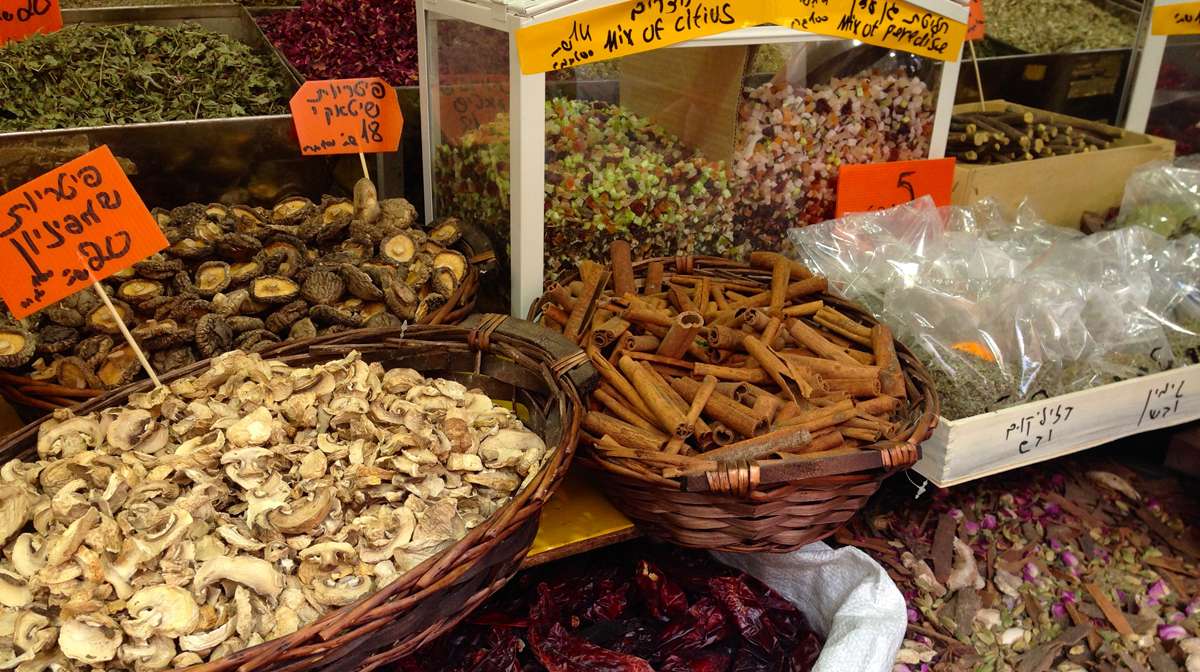I ate my way through Tel Aviv
One lesson I brought home from Tel Aviv is how to eat hummus — an important skill now that several new hummusiot have sprung up in Center City. I learned that the raw onion served with your hummus isn’t for eating plain or for ignoring, it’s for dipping. When plunged into the silky chickpea dip, the onion loses its bite but retains its crunch — an irresistible combination.
The other most important thing I learned is that there’s no point in asking for a recipe, because you won’t be able to replicate the Israeli dishes at home. Half the secret of the food in Israel is the flavor of the local produce. If you’ve never swooned over a simple chopped tomato topped with sea salt, then you’ve never tasted an Israeli tomato. Or cucumber. Or eggplant. Or cauliflower.
I spent three weeks eating my way through outdoor markets — each with its own personality. Carmel Market is like a grittier Reading Terminal Market. Levinsky Market is reminiscent of the S. 9th Street Italian Market with small storefronts passed down through families, a bustling street scene with sights and smells spilling. And HaTikvah Market, grittier still, was filled with more locals and very few tourists.
Carmel Market
I sipped uber-strong coffee at a tiny shop in Carmel Market, whose proprietor, Shlomo Cohen, doubles as a cantor and who proved it by chanting the beginning of the Kol Nidre (Yom Kippur prayer) as I stood, mouth agape. Carmel Market is a maze of booths and small, stuffed stores, some covered, others not. It was a feast for the eyes and nose as I took in spice shops with barrels overflowing with red, yellow, green, and burnt-orange spices, dates, tiny dried red peppers, woody twigs that taste like cinnamon, and teas that really looked a lot like the stuff that gets passed around in freshman dorms, as well as walnuts, sesame seeds, cashews, and dates.
In the aisles with red floors I found rows of whole fish on ice and meat kiosks that made me want to avert my eyes, but whose surprises — like a whole goat head — were too intriguing not to stare at. But that freakish vision was soothed by the row upon row of fresh Middle Eastern pastries — rugulah, hamentashen, and those made with angel-hair phyllo dough and stuffed with goodies like pistachios and dates. The narrow aisles are packed with locals clutching cloth bags, grandmothers with granny carts, religious and non-religious breaking through the crowd on bicycles, wide-eyed tourists, housewives with strollers, and millennials on motorcycles on their way to the six-seat craft beer bar tucked between stalls, as well as older men who sit together everyday as if holding court, and cats of every stripe.
Levinsky Market
Small shops line busy Levinsky Street, home of Levinsky Market. Piles of produce, barrels of nuts and olives and colorful merchandise overflow from the stores and burst out onto the sidewalk. I met a woman who spends her days making more than 50 kinds of halvah and who proved that, contrary to my lifelong belief that I don’t like halvah, I actually do. And that the Middle Eastern sweet, made of butter, sugar, tahini/sesame, and seasonings is not only toothsome but also can be quite a work of art with its layers of seeds, chocolate, dates, pistachios, and other colorful fillings. Her small shop was flanked by an olive store and a smoked fish store run by the grandson of the original owner.
The street is also home to small eateries. There’s a tea shop where hipsters drink fresh herb-tilled iced tea through colored straws while perched on overturned milk crates or in the flatbed of an old, plant-covered pickup truck permanently parked in front. There’s a bar specializing in craft beer and charcuterie and a mom-and-pop shop serving really, really good Persian pita sandwiches filled with freshly grilled lamb and accompanied by pickled vegetables. I knew I shouldn’t finish the whole thing, but I couldn’t stop myself.
HaTikvah Market
HaTikvah Market is mostly pedestrian, though there are plenty of locals on bicycles and motorcycles and butchers with wagons of meat, cutting through the crowd. It’s in a lower-income area in Southeast Tel Aviv, a less touristy neighborhood, but it offers fresh produce and herbs, meats, and prepared foods at reasonable prices.
And upscale Sarona Market is more like Eataly, with restaurants, kitchen gadgets, an intriguing store with a giant sesame grinder that makes flavored tahini and offers samples, a la ice cream parlors. It’s near Tel Aviv’s business district and, like Reading Terminal Market, attracts business executives as well as tourists at lunchtime.
Did I gain weight during my weeks in Israel? You bet. Was it worth it? You bet!
—
By Irene Levy Baker, author of “100 Things To Do In Philadelphia Before You Die” and soon-to-be-published book about Philadelphia foods and restaurants.
WHYY is your source for fact-based, in-depth journalism and information. As a nonprofit organization, we rely on financial support from readers like you. Please give today.











